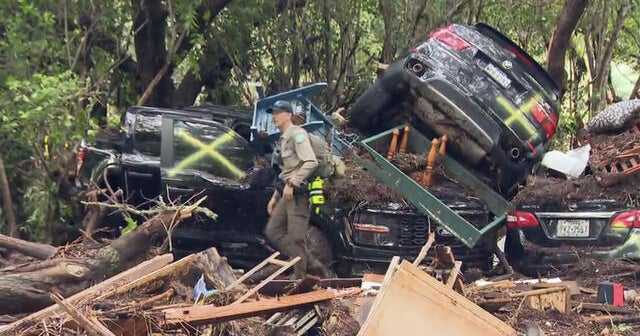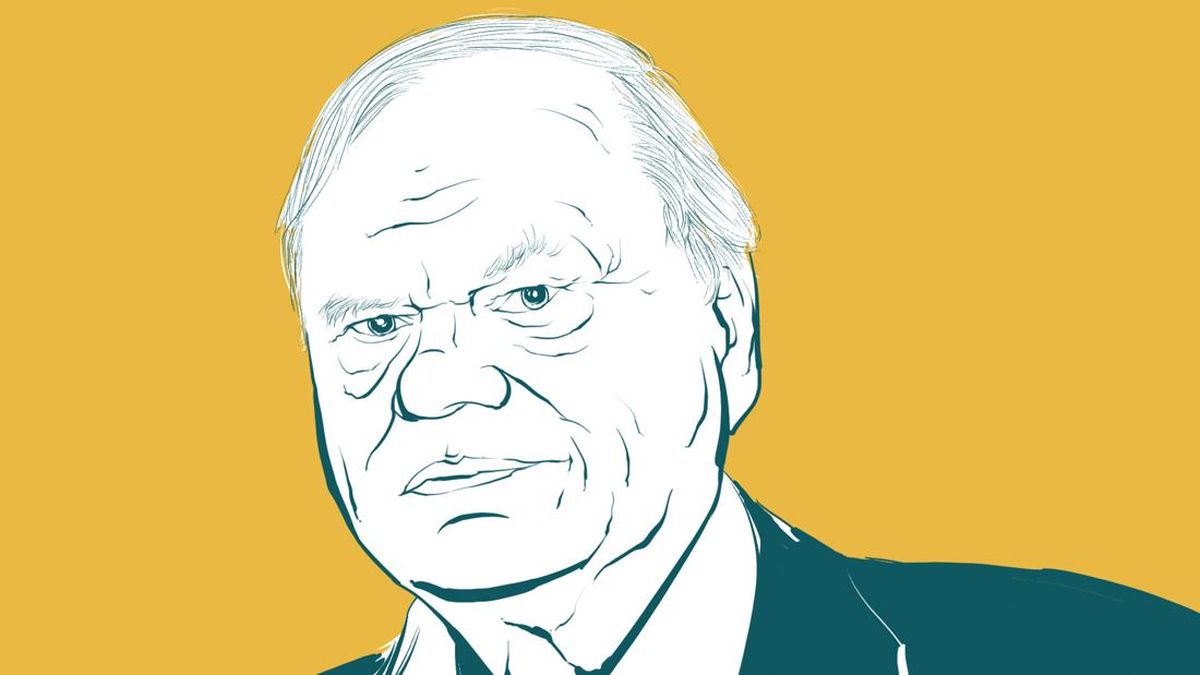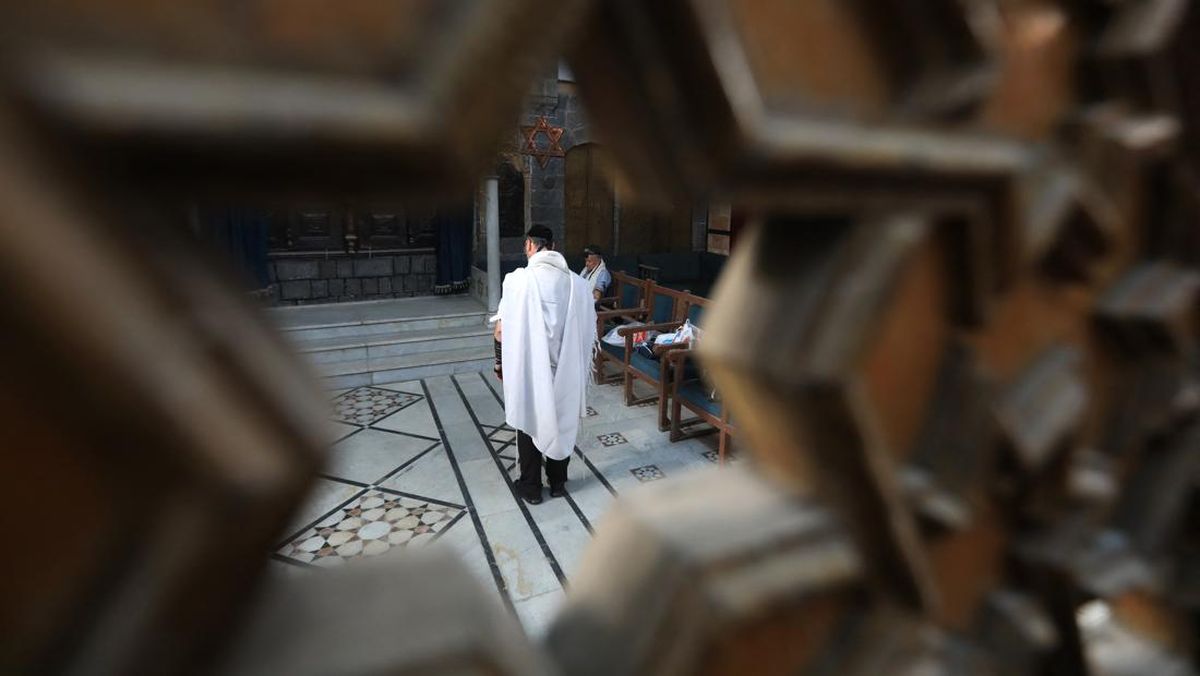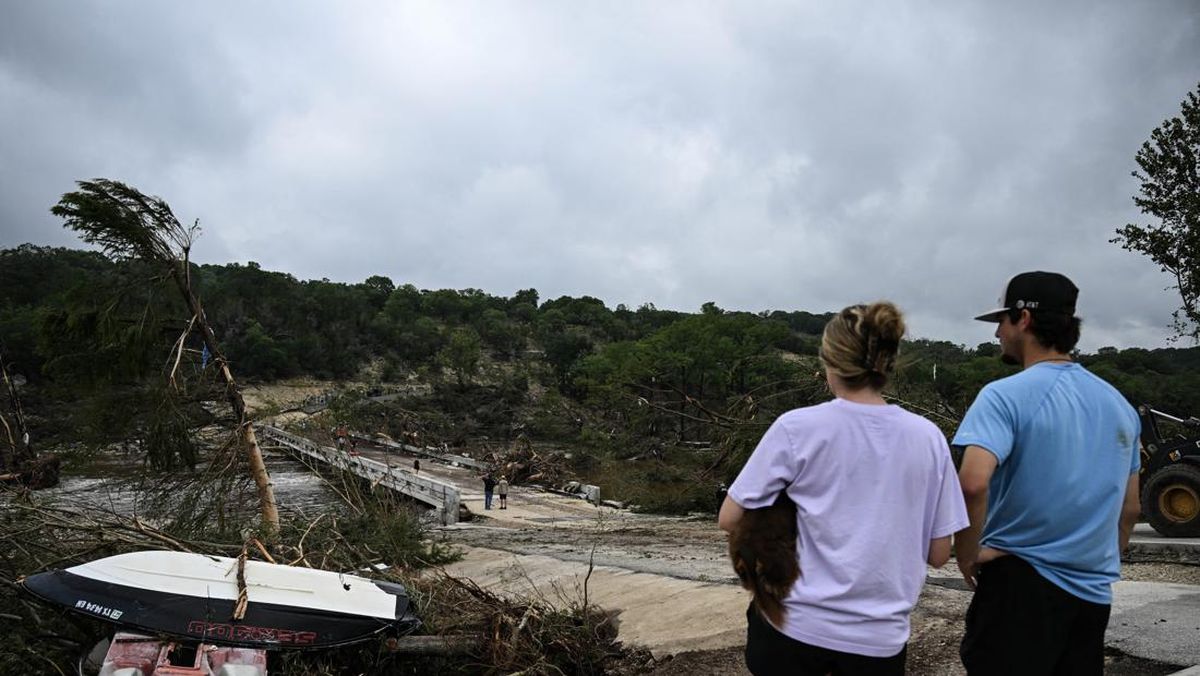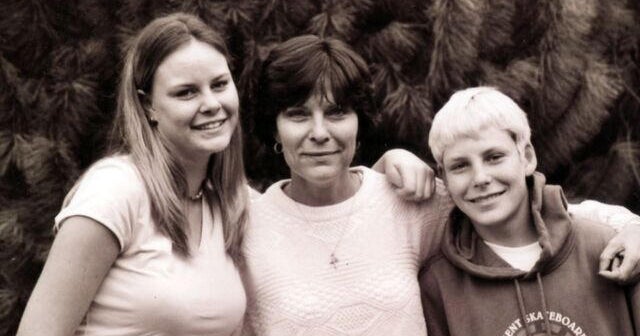This article is part of Traveller’s Holiday Guide to train journeys.
See all stories.My Grand Train Tour of Switzerland effectively begins in earnest, not as you might expect on a stretch of silvery, standard-gauge track tracing a precipitous route along the edge of some stunning mountainside, but instead atop the turquoise waters of a mighty lake.
No, there hasn’t been any unfortunate rail mishap. I’m safely aboard not a train but a magnificently preserved vintage steamship, its gigantic splish-splashing red paddle wheels spinning across this enchanting expanse of water even more wildly than an Oval Office mouthpiece.
The steamer, and the lake itself, is dwarfed by soaring peaks, their summits still dreamily spattered by the remnants of winter snow, converging from the cloudless heavens on this late spring day to the glimmering surface of the water.
In a few hours or so of churning across Lake Lucerne (Switzerland’s fourth largest), those aboard the venerable vessel, the Stadt Luzern, will rendezvous with the Gotthard Panorama Express, one of the iconic tourist trains which form this tour.
It will be awaiting us, we’re assured, at the lakeside village of Fluelen.
Despite the fact an actual train is conspicuous by its absence on this dazzling, waterborne beginning of my 12-day Inspiring Vacations independent train odyssey, this truly is a grand start to a near fortnight-long journey around this fabled central European nation of spectacular mountains, lakes and, yes, railways.

Awe-inspiring: A passenger train on the famous Bernina Express route crosses an historic viaduct.Credit: Getty Images
All the main railways featured – mostly red-painted tourist trains designed purely for pleasure – on the itinerary form not only the 1280 kilometres of the tour’s official route but what may represent the world’s biggest toy train set.
Each of the principal trains, the Gotthard Panorama Express, the Bernina Express, the Glacier Express and the GoldenPass Express – none of which are “express” in the truest sense, but, hey, what’s the hurry? – feature glass-domed carriages that afford maximum viewing of guaranteed unsurpassed scenery.
Add to that, meals, snacks and drinks on request, all served directly to your plush first- or second-class seat by cheery attendants.
Frankly, the only item missing onboard these transports of scenic delights is a thesaurus to assist in searching for fresh superlatives as each passenger struggles to describe the next all-enveloping breathtaking sight from their slow-moving glass and steel capsule.
While the trains remain the drawcard of any grand train tour, the overnight or longer stops offer time to explore several of Switzerland’s most charming cities, towns and villages.
ZURICH-LUCERNE-LUGANO – The Gotthard Panorama Express

Historic Zurich Hauptbahnhof, the terminus for Switzerland’s first railway line known as Spanisch Brötli Bahn.Credit: Getty Images
Every journey has a beginning and, the real and only slightly less romantic start to this rail tour is in the north, in Zurich, Switzerland’s largest city which is also surprisingly easygoing, having shed its stiff banker image.
I depart from Zurich Hauptbahnhof, its grand central station which is also one of Europe’s oldest railway terminals, dating to 1847. Zurich Hauptbahnhof is also one of the continent’s busiest. To meet the Gotthard Panorama Express, the first of the class trains on the itinerary, we must take a scheduled service to the city of Lucerne, 52 minutes south, via a rather prosaic double-decker train that departs every half hour or so, a fine frequency for a country of only 9 million people.
There are even faster services, but I elect for the longer one, so I can savour my first encounter with the Swiss landscape along the way. I’ve made time, too, before my departure from Zurich Hauptbahnhof for a traditional hearty Germanic-like lunch at the cavernous Brasserie Federal, inside the station and across from its famed Swiss railway clock meeting point.
In my carriage are a young Canadian couple trying not to sound or look American. Neophyte Switzerland visitors like me, the couple are struggling to find a spot to store their luggage (a common problem on Swiss trains). The wife ends up having to awkwardly squeeze her suitcase in the seat space between herself and a giant of a man barking loudly in Russian on his mobile.

Cavernous Brasserie Federal, within Zurich Hauptbahnhof.
After a day in Lucerne, where a pair of covered medieval bridges cross the river that runs through it, I’m on Lake Lucerne aboard the Stadt Luzern. From the steamship’s stern, a colossal red and white Swiss ensign furls and unfurls in the breeze under brilliantly blue skies as we approach the transfer point for the Gotthard Panorama Express.
For almost the whole 30-kilometre passage across the lake from Lucerne, luxuriantly vegetated mountains form a backdrop for its crystalline waters; chief among them is the almost perfectly triangular Mount Pilatus at 2128 metres (only a smidgen lower than Australia’s highest mountain), which seems to follow the steamer for much of our voyage.
After a few hours on the lake, it’s time to transfer to the waiting Gotthard Panorama Express for the 2½-hour journey to Lugano.
Except for the day-long Glacier Express ahead of me, all the journeys on the prestige tourist trains are relatively brief by world standards, but the terrain encountered en route makes each one genuinely unforgettable.

Cross purposes: The Glacier Express near Hospental in the Urseren Valley.
Yet, curiously enough, the Gotthard Panorama Express is almost as much about its no-view tunnels as it is about the sort of views you come to expect from a visit to Switzerland. Indeed, in a country famous for its tunnel vision, the sober Swiss are justifiably renowned for their boring skills, and it’s not too long before the Gotthard Panorama Express is plunged into darkness (or, at least, the outside is), as we enter the tunnel from which it partly borrows its name.
We’re passing through one of three of the Gotthard complex of tunnels, namely the historic, 15-kilometre Gotthard Railway Tunnel, a marvel of engineering which opened in 1882 after a decade of construction.
A century later, the Gotthard Road Tunnel, 17 kilometres in length, followed, with the final member of this subterranean trio, the 57-kilometre Gotthard Base Tunnel opened in 2016, allowing virtually seamless travel through, rather than across, Europe’s tallest peaks, from one end of the continent to another.
During the Gotthard Panorama Express’ passage through the original tunnel the train intentionally slows to a crawl as the story of how it was built is related over the PA, complete with the sound effects of a tool, wielded by the mostly imported Italian labour of the day, chipping away at a rock.
While passengers are purposefully kept in the dark for periods of the journey, there’s no shortage of scenery beyond the myriad tunnels, with some of the most spectacular views emerging when the Gotthard Panorama Express nears the village of Wassen, distinguished by its centrepiece Baroque church.
It’s here the train descends from the direction of Lucerne in a tight double-loop, allowing passengers to view the aforementioned village and its church three times and to gaze down on it from about 1000 metres, only 100 metres or so shy of the highest point of the journey at Airolo.
It pays to prepare yourself, cameras poised, around these parts for the quirkiest moment of the trip. Furthermore, it’s around here that a Swiss couple, twice daily and apparently without fail, emerge from their alpine château waving two giant Swiss flags as a form of greeting and goodwill to the train and its manifest of passengers from around the globe.
LUGANO TO ST MORITZ – The Bernina Express

Round trip: The Brusio loop is a key part of the World Heritage-listed Rhaetian Railway which the Bernina Express traverses.Credit: Getty Images
At Lugano, in Switzerland’s south, where the Gotthard Panorama Express has almost magically transported us in the late afternoon, it’s time to swap the guten tags of German-speaking Switzerland to buon pomeriggio, in the Italian-language part of the country.
Early the next morning there’s time, but not all that much of it, to explore a little of Lugano before we need to board the Bernina Express. Lugano has a gorgeous lakeside promenade leading to an equally appealing old town with Bolognese-style porticoes. We have breakfast at Grand Cafe Al Porto, renowned for its chocolates and pastries, which opened its doors in 1803.
But there’s no time for a second cappuccino because to reach a waiting Bernina Express in the town of Tirano, we need to take the train fancier’s worst fear – a positively unromantic connecting coach. Yet, as it eventuates, the three-hour route is spectacular (there goes that word again) since it traverses the glorious shores of Lake Como, aka George Clooney country; a cameo into Italian territory before re-entering Switzerland proper.

Time travellers: The Bernina Express pauses at the 2091 kilometres station at Alp Grum beside a ubiquitous Swiss station clock.Credit: Getty Images
Almost immediately after it departs Tirano on its 122-kilometre, four-hour journey, the Bernina Express begins its climb to its highest point of 2253 metres at Ospizio Bernina, from where it descends, affording breathtaking valley and village vistas, for the remainder of the trip to St Moritz.
Before that, the train must negotiate a network of elaborate bridges and viaducts including the Brusio spiral, a single-track stone railway viaduct on the World Heritage-listed Bernina Railway. It’s all part of an early 20th-century engineering feat that’s one of the most photographed sections of the whole Swiss railway network.
Climbing ever higher, the train pauses at the station at the 2091-metre Alp Grum, allowing passengers to momentarily de-train, as they say, to savour views of the Val Poschiavo, the Swiss valley famed for organic farming, and of the 3.5-kilometre Palu Glacier.
Before we know it, the conductor sounds an all-aboard bell on the platform, and we’re off again. While there’s not much snow left here at in this latter end of spring, a bit higher up, at Ospizio Bernina, it’s a post-winter wonderland, with lakes still frozen and the summits of peaks blanketed in snow, offering an exciting sense of what it must be like to ride these frosty rails in the winter months.
ST MORITZ TO ZERMATT – The Glacier Express

Peak hour: A train at the station of the legendary winter and summer playground of St Moritz.Credit: Getty Images
Even the Swiss make light of the slow pace of its most fabled tourist train, leading one to wonder why it wasn’t dubbed the Glacial Express rather than the Glacier Express. No matter. The only haste here is to the expansive windows of one’s train carriage to secure a snap, or these days an Instagram video, of the latest natural wonder on the opposite side of the regrettably glary glass.
The Glacier Express consumes a whole day to traverse 291 bridges and pass through 91 tunnels on its tantalising trundle between St Moritz and Zermatt, Switzerland’s two most glamorous winter and summer alpine retreats. Along its way and with summer approaching, the Glacier Express passes meadows filled with bell-wearing bovines.

Heaven scent: Alpine blooms on a leg of the Grand Tour.Credit: Getty Images
A veritable Swiss shag pile of yellow and purple wildflowers spreads out below the impossibly perfect white and grey, ever-pervasive snowcapped peaks.
The extended duration of the Glacier Express allows time for a hot al carte meal, even in second class, served at your seat as some of the world’s most appetising panoramas are revealed. With the menu declaring “the ‘world’s slowest express train’ does not serve fast food”, I order the yellow pea soup, a main of Swiss macaroni with beef accompanied by a side of apple sauce (well, this is Switzerland), and a traditional local nut cake for dessert, all accompanied by a glass of excellent Swiss pinot noir.
If I’d had a second, or even third, glass of that drop I may have even been tempted to scrawl on the menu, “das Leben ist schön im Glacier Express” (or “Life is good on the Glacier Express”).

Cattle train: Swiss cows linger as a cogwheel mountain train passes their alpine pasture.Credit: Getty Images
As my airline-style foldaway table is cleared, the Glacier Express pushes onwards and for that matter, upwards, to this leg’s highest point, Oberalp Pass, at an elevation of 2033 metres. But that’s positively puny, at least by Swiss standards, compared to the Gornergrat Heritage Railway, the rack railway you can take – when too many trains are never enough – from a station in the middle of the train’s final destination, Zermatt.
Dating to the late 19th century, it climbs to an altitude of 3098 metres above sea level. On clear days there are views of more than two dozen peaks rising above 4000 metres, including the mighty Matterhorn at 4478 metres.
ZERMATT-MONTREAUX-INTERLAKEN – The GoldenPass Express

Village people: The Zermatt Valley and eponymous resort overlooked by the Matterhorn peak.Credit: Getty Images
After an overnight stay in Zermatt, where, from the balcony of my hotel room, I can just make out the tell-tale form of the Matterhorn, wrapped, like a veiled dancer, in wispy cumulous, I take a regular passenger service from an altitude of 1620 metres all the way down to the Lake Geneva-side city of Montreux, at 375 metres.
Famed for its annual jazz festival and palm trees that line the lakefront, it’s from Montreux that the grand tour connects to the GoldenPass Express. But not all the grandest sights on this tour can be viewed from a slow-moving train while in Montreux, so I take a short bus ride from the city centre to Chillon Castle.
Built on a rocky island a backdrop of mountains, this so-called water castle is the most visited historic building in Switzerland. Chillon was the residence and toll station of the Counts of Savoy between the 12th and 16th centuries.
At the less lovely Montreux railway station, a gleaming French navy rather Swiss regulation red, GoldenPass Express awaits its passengers. This is the train, which when launched in 2022, allowed for the creation of the Grand Train Tour of Switzerland and the cannily conceived continuous journey from Zurich and return.

Summit special: Gornergrat observatory and railway station overlooked by the might MatterhornCredit: Getty Images
The GoldenPass Express delivers passengers to Interlaken through the Bernese Alps and via Gstaad, an exclusive resort town beloved of the too rich and too famous (from the train, look out for the Louis Vuitton outlet in the traditional burnished timber Swiss chalet-like building by the track).
If the Swiss scenery gods are co-operating, there are mountain vistas to be enjoyed all the way on this journey of three hours, 15 minutes over 115 kilometres, with the loftiest point on the route being Saanenmoser, a high mountain pass at 1274 metres.
Alas, on this day those peaks and their summits are concealed behind low-hanging cloud, leaving a still captivating view the entire way of pea-green (as opposed to yellow pea) Swiss farmlands full of indigenous simmentals, each sporting “treicheln” and “glocken” (cow-bells), that tinkling symbol of bucolic Switzerland.
After descending the alps, the final stretch of the GoldenPass Express journey, the line traces the southern edge of Lake Thun with our final destination, the touristic Interlaken, announced by a cute, preemptive strike of a cowbell over the train’s PA.
INTERLAKEN-JUNGFRAUJOCH-ZURICH – The Top of Europe cog railway

Life at the top: An ice-bound Jungfraujoch Sphinx Observatory at 3454 metres.Credit: Getty Images
By the penultimate day of the tour, I’m running out of both railway lines and lines in this account of the Grand Train Tour of Switzerland. Nonetheless, it remains necessary to take three more trains to reach what is by far the highest point of the trip in every sense.
I’m en route to Jungfraujoch, which at 3454 metres is billed as the “top of Europe”. This mountain pass is home to the highest railway, and for that matter, train station on the continent, with its peak, Jungrau, rising another 704 metres.
To reach Jungfraujoch, I train it by the regular service to the alpine village of Lauterbrunnen and change, due to the abrupt rise in altitude from here, to a rack railway, at Klein Scheideggg, at 2061 metres. From there a final change of trains is required when I connect to the 40-minute ride aboard the rather miraculous cogwheel railway. Almost all of this section of the journey is in a tunnel carved deep inside the mountain.

The Jungfrau Railway is the highest in Europe.Credit: Getty Images
By the time you reach what is today one of Switzerland’s premier tourists attractions and where, even in summer, outside temperatures can be well below freezing, you’ll encounter a kind of Swiss-style Disney on Ice. It’s a lot of fun.
Loading
Here at Jungraujoch is where that “international Australian” George Lazenby shot scenes from the James Bond instalment, On Her Majesty’s Secret Service. The main structure on the summit features in the movie, along with restaurants and cafés, both the planet’s highest Lindt chocolate outlet and watch shop. Well, this is Switzerland.
As I venture outside onto the icy so-called Sphinx observation deck, excited, puffer-jacketed tourists are in a selfie-frenzy, even though, with late spring snow falling and the temperature reading minus 10, there is not a single mountain visible.
Yet on this highest point of a grand train tour of Switzerland brimful of scenic highlights, it’s still sufficiently impressive to leave me again wishing I’d popped a copy of a superlative-inducing Roget’s in my frozen day pack.
Five tips for an even smoother ride
Adopt a pack mentality Swiss trains, a little like their Japanese counterparts, don’t have abundant space for luggage. Be one of the first to board to secure luggage rack space. Remember to pack warm items of clothing, even in summer.
Food, ingloriously expensive food Even their fellow Europeans consider Switzerland expensive to visit with the Swiss franc valued even higher than the euro. Food is one of the biggest expenses of any visit, so if you want to save pennies, tuck into those inclusive pre-train journey hotel breakfast buffets and look out for fixed-price lunches.
No drama panoramas If you don’t find yourself on the right side of the train carriage for views don’t obsess about it. Switzerland’s scenic tourist trains are glass-domed to maximise viewing, with the Gotthard Panorama Express even boasting its own dedicated “fotowagen” carriage where windows can be opened for photography.
Be sure to clock on You’ll never be lost for time in Switzerland as every single railway station features its own classic Swiss railway clock with a graphic black, white and face which has been adapted to luxury wristwatches that have sold in the millions. Of course, in a nation renowned for its timeless efficiency, never, ever be late for your train.
The details
Loading
Tour
Inspiring Vacations’ 12-day independent Grand Train Tour of Switzerland includes journeys aboard four of the nation’s most famous scenic alpine trains, as well as a pilgrimage to Europe’s highest railway station. Along the way the itinerary encompasses classic Swiss cities and towns such as Zurich, Lucerne, Lugano, St Moritz, Zermatt, Montreux and Interlaken.
Book
The tour costs from $6445 a person (airfares not included), based on independent travel in 2026 (with a limited number of departures remaining for the rest of this year). The price includes all rail arrangements within Switzerland, guest cards in Zurich, Lucerne, Lugano, Montreux and Interlaken, providing free local transport and discounted shopping, and 11 nights in quality three-star accommodation with breakfast daily. A 12-day Grand Train Tour of Switzerland with Ultimate Rail Upgrades from $8795 a person (airfares not included) with all of the above inclusions and quality four-star accommodation. See inspiringvacations.com/au
Fly
Singapore Airlines offers daily flights from Australia to Zurich via Singapore. See singaporeair.com. From Zurich Airport, the convenient train to Zurich’s central station takes 10 to 15 minutes.
The writer travelled as a guest of Inspiring Vacations, with the assistance of Singapore Airlines.



